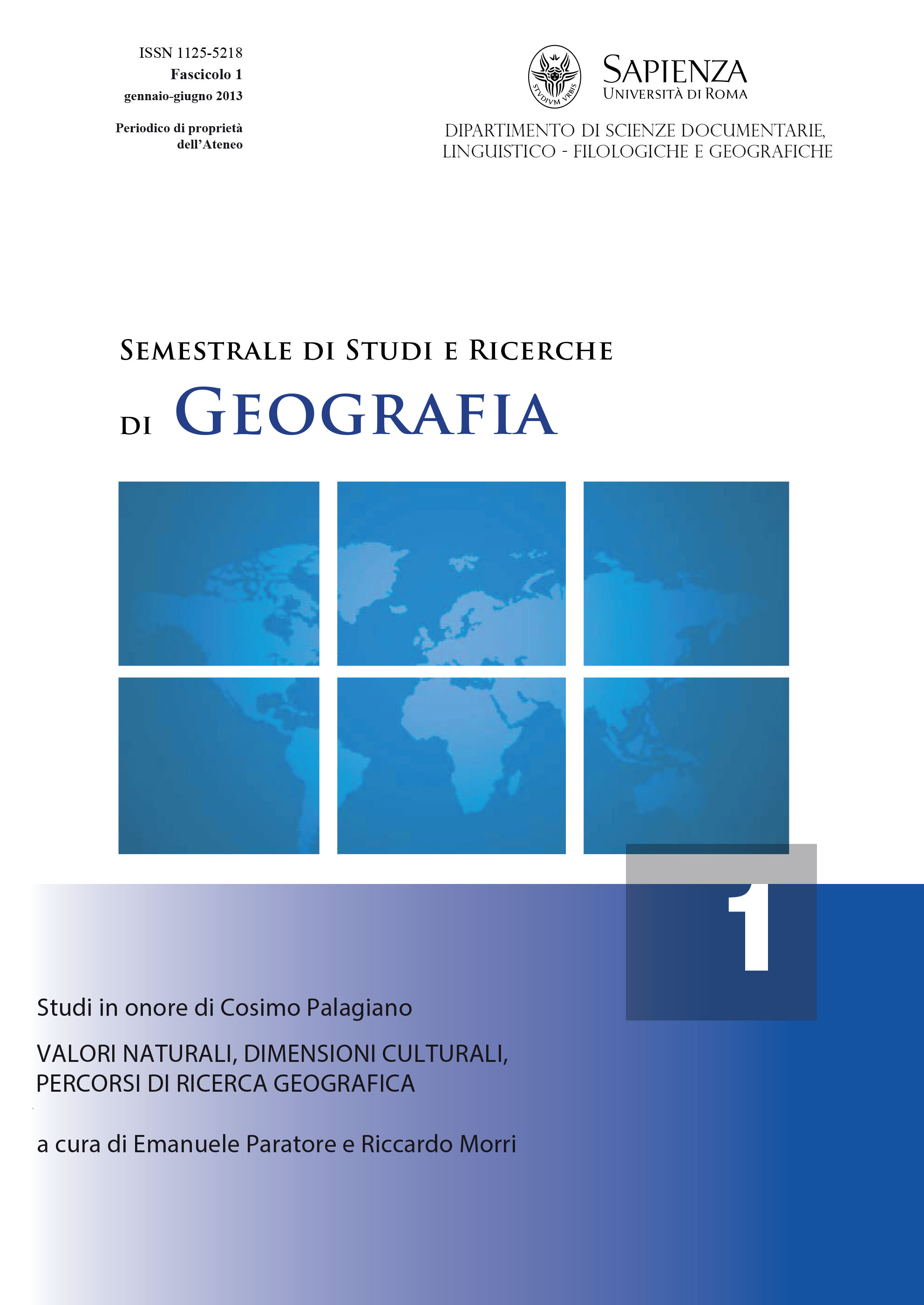LE NUMEROSE SINAGOGHE ROMANE: DOVE QUANDO COME
DOI :
https://doi.org/10.13133/1125-5218.15181Résumé
Several Synagogues in Rome. Where, When and How
The trigger that started off this research was the visit by Pope Benedict
XVI to the Tempio Maggiore in Rome on 17th January 2010, renewing
the historical visit by Pope John Paul II in 1986. Rome's Chief Rabbi, rav
Riccardo Di Segni, in his welcome speech, among other things, mentioned
that a few days before he inaugurated a new synagogue in Ostia, the
16th in the area of Rome. This piece of news was so surprising that my
interest was immediately caught; as a consequence, I suddenly began a
research, conducted through the meanders of the urban web, to identify
and locate all these synagogues in Rome. The Jewish community in Rome
has more than 2000 years of history (and geography). The most ancient
synagogue, whose ruins still exist, is located in Ostia Antica and dates
back to the 1st century of the Christian era. It is noticeable that, unlike the existence of at least six recognized Jewish catacombs, there is no evidence of other synagogues in the roman age. Nowadays, out of the 30,000 Jews living in Italy, about 15,000 are resident in Rome. They are mainly concentrated in two areas: the «Quartiere Italia», established between World War I and II, and the more recent area «Marconi-Portuense». It is also worth noting that, as a result of the «Pogroms» that happened after the «Six Days War» in 1967, over 3000 Jews arrived in Rome from Libya and, not by chance, established their residence around «Piazza Bologna», that is the square located at the center of the «Quartiere Italia». There are six Jewish religious places in downtown Rome; three more are located in the area surrounding Piazza Bologna and six in the «Marconi-Portuense» area. The most recent one was opened in Ostia. To complete the overall picture (or somewhat the map), we should also consider the seasonal summer synagogues in Anzio, Fregene and Santa Marinella.
Les nombreuses synagogues romaines: ou quand comment
Le dimanche 17 janvier 2010, le Pape Benoît XVI se rendit dans la Grande
Synagogue de Rome, afin de renouveler la rencontre historique de Jean
Paul II du 13 avril 1986. L'événement fut transmis directement par la RAI.
Dans le message d'accueil le grand rabbin rav Riccardo Di Segni rappella
qu'en ces jours-là il avait inauguré une nouvelle synagogue: la seizième,
à Ostia. Ce signe inimaginable a provoqué la recherche actuelle qui s'est
développée dans les plis du tissu urbain. La communauté hebraïque
romaine compte plus de 2000 ans d'histoire (et de géographie); la
plus ancienne synagogue, dont nous avons des traces, est celle d'Ostia
Antica, qui remonte au I siècle après J. C.; nous n'avons pas de traces
des autres, contrairement aux catacombes hébraïques au nombre de six.
Sur les 30.000 Juifs qui vivent en Italie, près de 15.000 sont à Rome,
partagés entre les quartiers au centre de la Capitale, le quartier “Italia”
né entre la première e la deuxième guerre mondiale, et dans le passé
le plus recent la zone Marconi-Portuense. On doit se rappeler qu’en
plus des 3.000 Juifs arrivés fugitifs à Rome venant de la Libie en 1967,
après les pogrom qui ont suivi la Guerre de Six Jours, se sont établis –
ce n'est pas par hazard – antour de Piazza Bologna et à Marconi-Portuense.
Dans le centre de Rome, six sont des lieux de culte hébraïque; trois dans
le “polo” de la Piazza Bologna; six dans le «polo» Marconi-Portuense;
le seizième e le dernier par ordre chronologique à Ostia. Pour compléter
le tableau ou mieux le plan, il faut aussi tenir compte des synagogues
saisonniées pour l'été à Anzio, Fregene, Santa Marinella.
Téléchargements
Publiée
Numéro
Rubrique
Licence
Gli autori che pubblicano su questa rivista accettano le seguenti condizioni:- Gli autori mantengono i diritti sulla loro opera e cedono alla rivista il diritto di prima pubblicazione dell'opera, contemporaneamente licenziata sotto una Licenza Creative Commons - Attribuzione che permette ad altri di condividere l'opera indicando la paternità intellettuale e la prima pubblicazione su questa rivista.
- Gli autori possono aderire ad altri accordi di licenza non esclusiva per la distribuzione della versione dell'opera pubblicata (es. depositarla in un archivio istituzionale o pubblicarla in una monografia), a patto di indicare che la prima pubblicazione è avvenuta su questa rivista.
- Gli autori possono diffondere la loro opera online (es. in repository istituzionali o nel loro sito web) prima e durante il processo di submission, poiché può portare a scambi produttivi e aumentare le citazioni dell'opera pubblicata (Vedi The Effect of Open Access).


